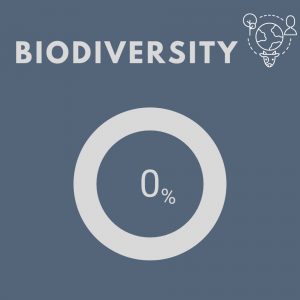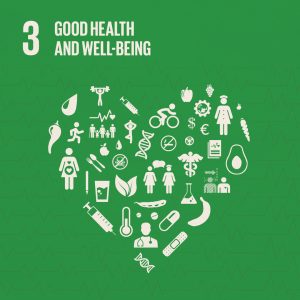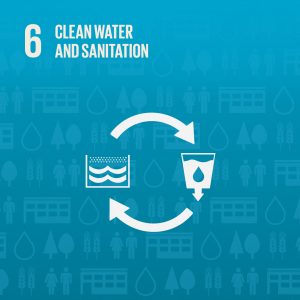by Meleah Montgomery, Office of Sustainability
Universities draw students because of exceptional academic programs, job opportunities, and most importantly, the environment on campus. Grounds are a crucial component of an institution because it is the first thing students observe when visiting and serve as a daily route for thousands of commuters. That is why STARS1 recognizes institutions that plan and maintain their grounds with sustainability at the forefront. With Grounds falling under the Operations category, STARS believes beautiful campuses can be planned, planted, and maintained in any area while reducing the use of toxic chemicals, protecting wildlife habitat, and conversing resources.
A welcoming environment is built upon sustainable practices and calls for innovation and creativity. Creating a space that meets the needs of humans while maintaining healthy ecosystems requires skills and mindsets that consider all social, ecological, and economic aspects. STARS states that maintaining the grounds on a campus coincides with UN Sustainable Developmental Goals:
- 3: Ensure healthy lives and promote well-being for all at all ages
- 6: Ensure availability and sustainable management of water and sanitation for all
- 15: Protect, restore, and promote sustainable use of terrestrial ecosystems, sustainably manage forests, combat desertification, and halt and reverse land degradation and halt biodiversity loss
The Grounds category consists of two subcategories worth a total of 3 points.
Subcategories
 Landscape Management: STARS awards points for Institutions whose grounds are managed without inorganic fertilizers and chemical pesticides, fungicides, and herbicides. Specifically, points are awarded if their areas are managed in accordance with an Intergrated Pest Management (IPM) program that only uses selected chemicals when needed.
Landscape Management: STARS awards points for Institutions whose grounds are managed without inorganic fertilizers and chemical pesticides, fungicides, and herbicides. Specifically, points are awarded if their areas are managed in accordance with an Intergrated Pest Management (IPM) program that only uses selected chemicals when needed.
Auburn’s Score: 1.20/2.00
- Biodiversity: STARS recognizes the significance of when institutions own or manage land that
 includes or is next to legally protected areas, priority sites for biodiversity, or regions of conversation importance. STARS increases the number of available points in this subcategory based on whether an institution has conducted an assessment to identify endangered and vulnerable species. If such areas are identified, then they are graded on whether a plan has been established to protect those species and/or habitats.
includes or is next to legally protected areas, priority sites for biodiversity, or regions of conversation importance. STARS increases the number of available points in this subcategory based on whether an institution has conducted an assessment to identify endangered and vulnerable species. If such areas are identified, then they are graded on whether a plan has been established to protect those species and/or habitats.
Auburn’s Score: 0.00/1.00
Auburn’s Total Score: 1.20/3.00
Reflections
Auburn has room for improvement but does have quite a few positive practices to build upon. We developed a Campus Landscape Master Plan (CLMP), which embraces a sustainable environment by emphasizing stormwater management and other practices. We manage areas on campus in accordance with an Integrated Pest Management (IPM) program. Projects designed and installed by Landscape Services assign priority to native plans for all new buildings outlined in the Landscape Master Plan.
To highlight a few efforts on campus
- Several acres across campus are mowed every two weeks during growing seasons, and no fertilizer or pesticides are used in or nearby.
- Landscaping Services has installed 154 self-watering pots on campus for seasonal flower plantings to reduce overwatering and save on labor.
- Longleaf Pine straw is used in landscape areas to retain moisture, suppress weeds, and control erosion.
However, Auburn has not assessed endangered and vulnerable species or areas of biodiversity importance on land owned or managed by the institution. The university implements different methodologies as part of the Campus Master Plan to monitor areas of importance. The Parkerson Mill Creek, which runs through the heart of campus, was thoroughly assessed to determine characteristics, alternative management plans, and future action plans. In the 2014-2015 academic year, a 400-foot section of the creek was restored to stabilize the stream banks from erosion, improve water quality, reduce the stream’s velocity, and improve its appearance. This area now serves as an outdoor classroom and visually demonstrates the benefits of stream restoration for students.
Students also have access to the 13.5-acre Donald E. Davis Arboretum, which holds a plethora of valuable information. It promotes education, displays, and preserves living plant collections of native southeastern plant communities, and encourages the connection between us and the natural world. In the heart of campus, students, faculty, staff, and community members have easy access.
Additionally, updates in 2016 to the Campus Master Plan determined tree species that are native should be preserved and invasive plants removed. The replacement of invasive species with native species positively helps local environmental conditions.
Actions
Students:
- Look into groups or organizations such as the Organic Garden Club, the Natural Resource Management Club, or the Crop, Soil, and Environmental Sciences Club to learn more about land use.
- Do the self-guided stormwater management tour in the Arboretum.
- Take actions to minimize waste, reuse resources, and recycle.
Faculty:
- Continue to promote information about the institution’s sustainable landscape management program.
- Incorporate sustainable landscape management practices into curriculum and courses when applicable.
¹The Sustainability Tracking, Assessment, and Rating System (STARS) program is a self-reporting framework for institutions of higher education to track their sustainability performance created by the Association for the Advancement of Sustainability in Higher Education. Overall, STARS is made up of 211 possible points in 64 different subcategories. The subcategories are grouped by Academics, Engagement, Operations, and Planning & Administration. Additionally, participants may receive extra points for exemplary and innovative practices. In this summary, our score is shown over the amount of possible points for each credit. View Auburn University’s 2022 STARS Report for more details.
Learn about the SDGs & AU and our contributions related to this post.







